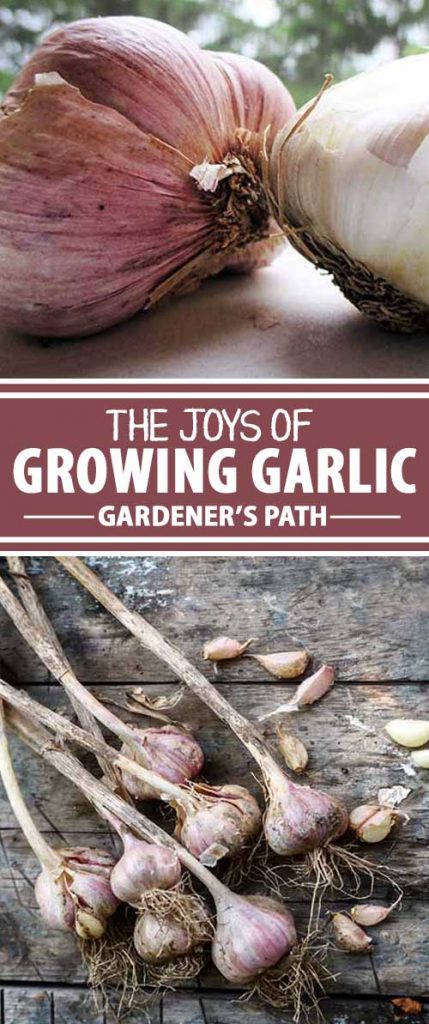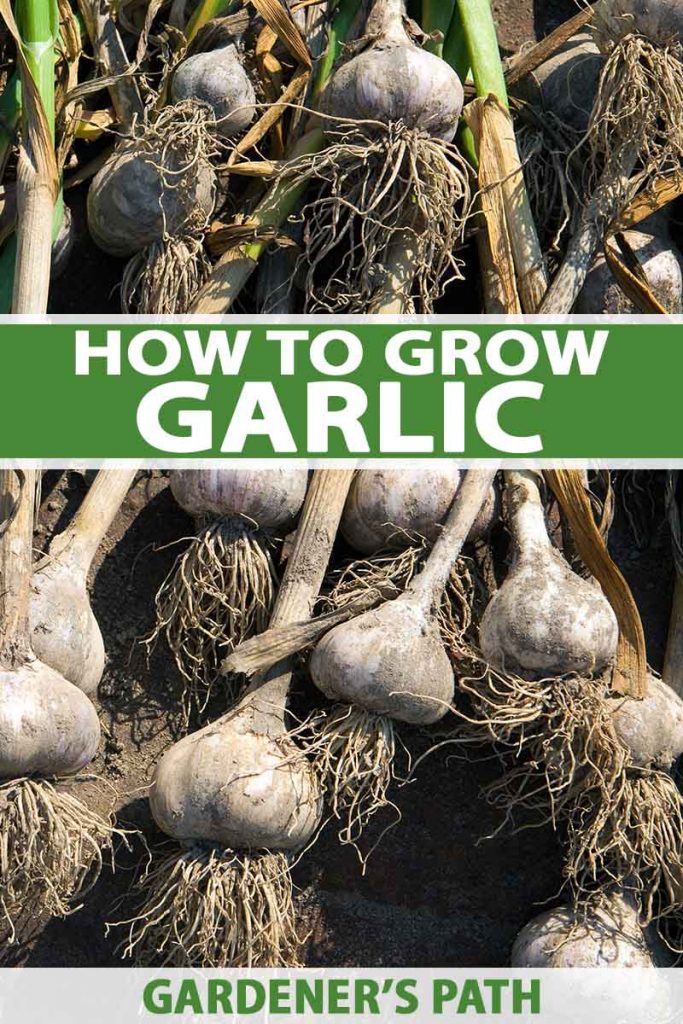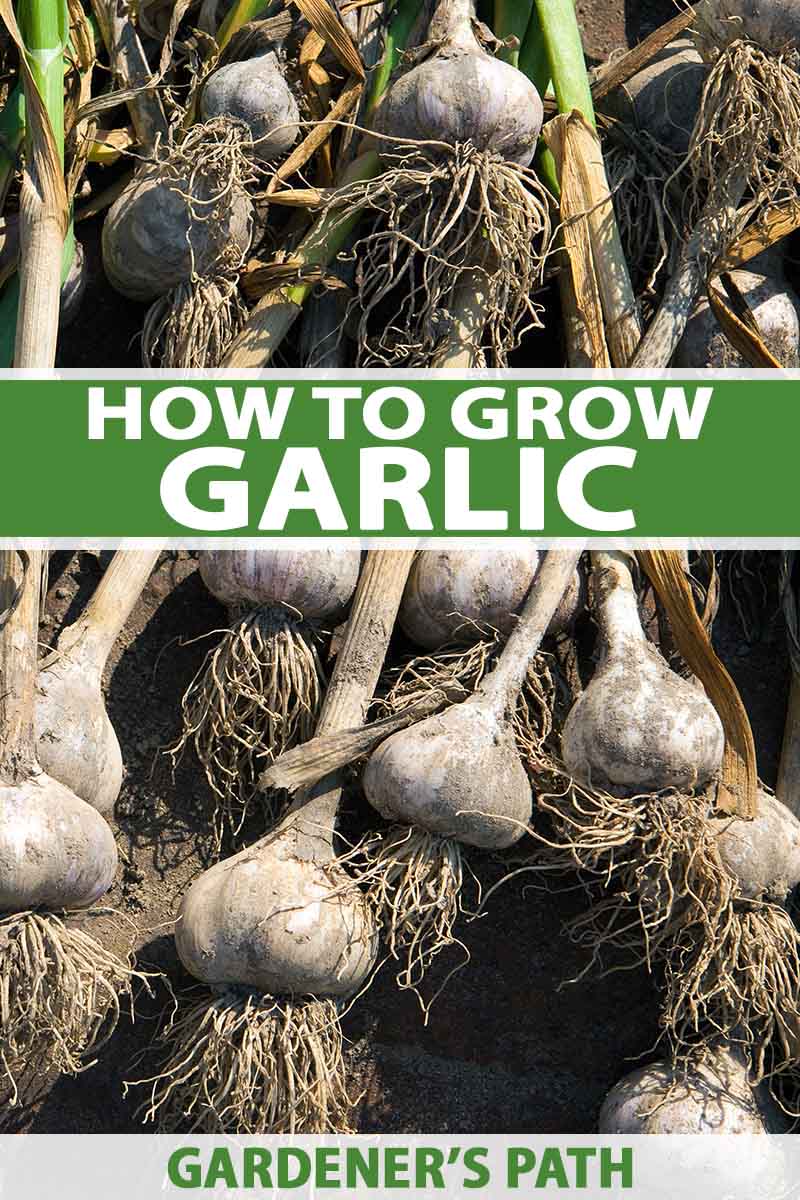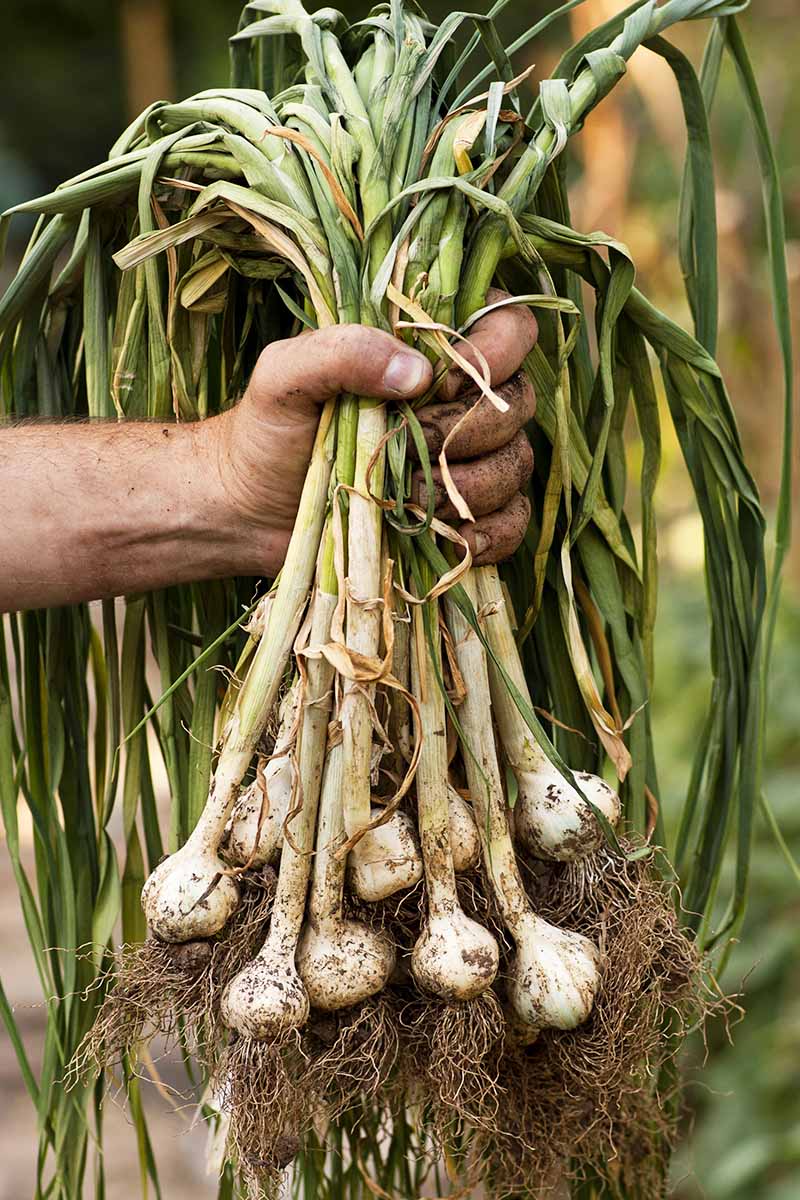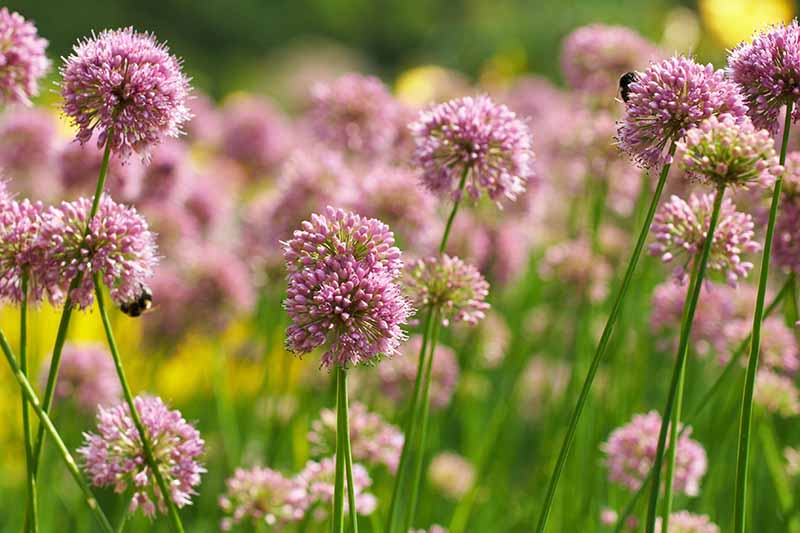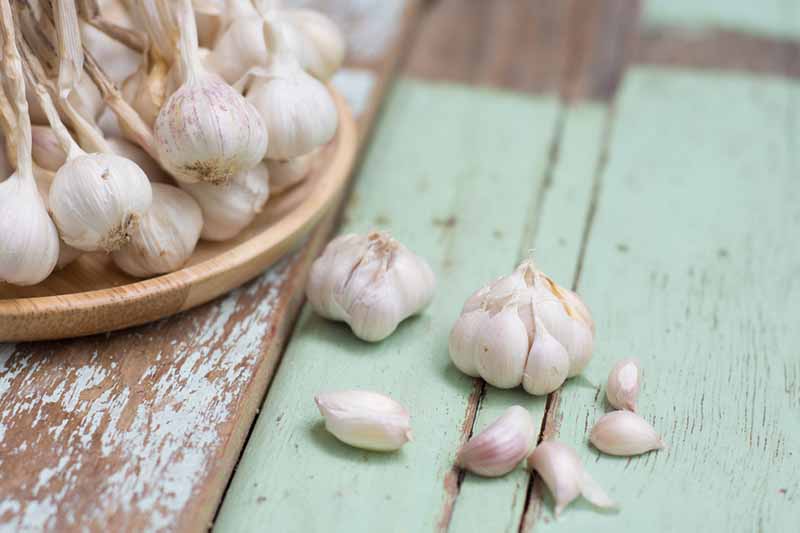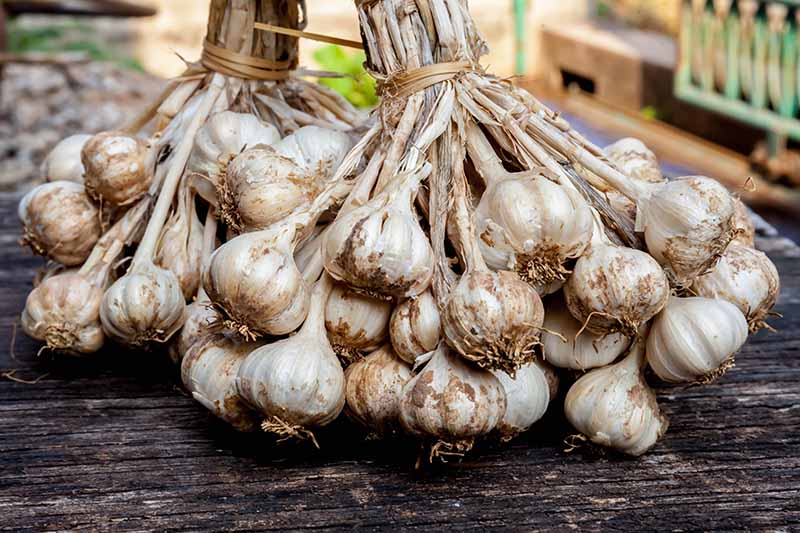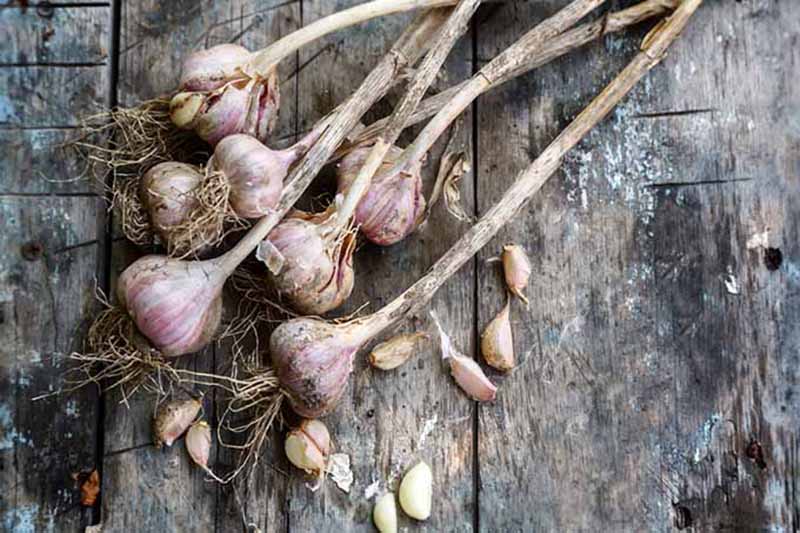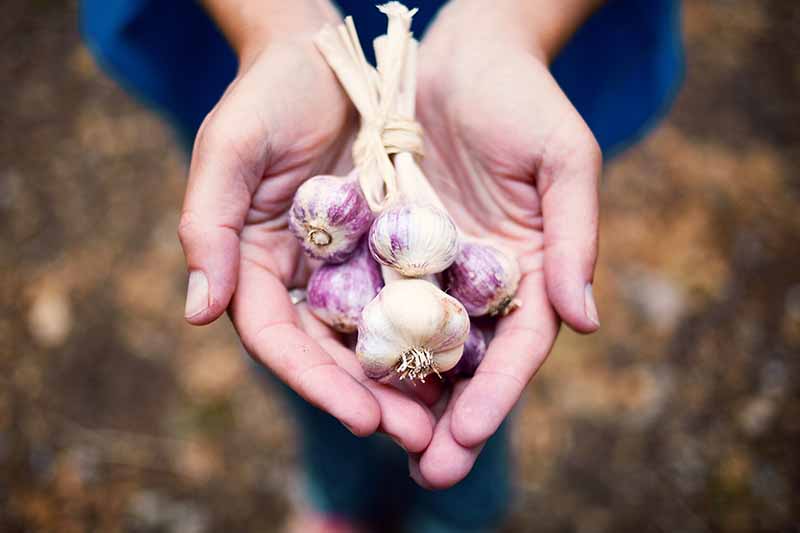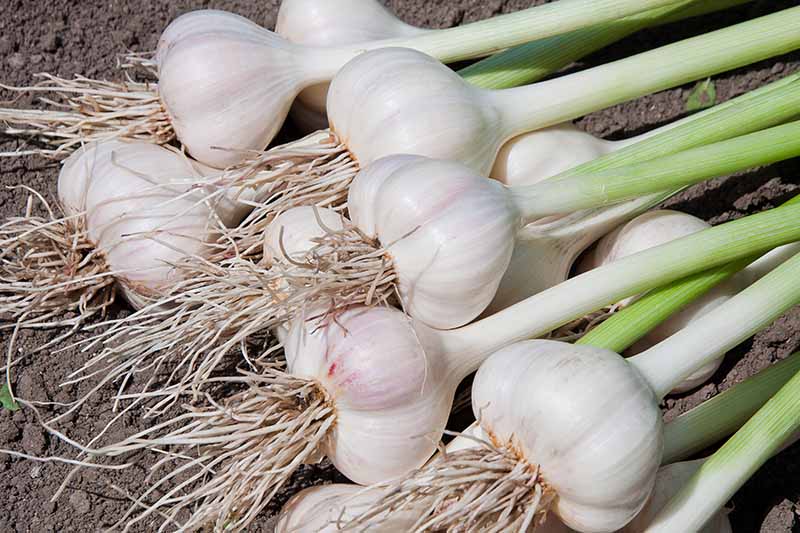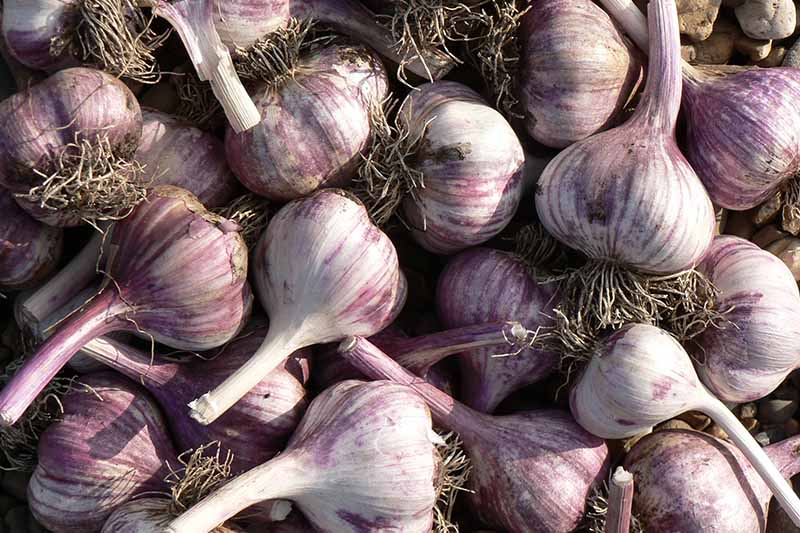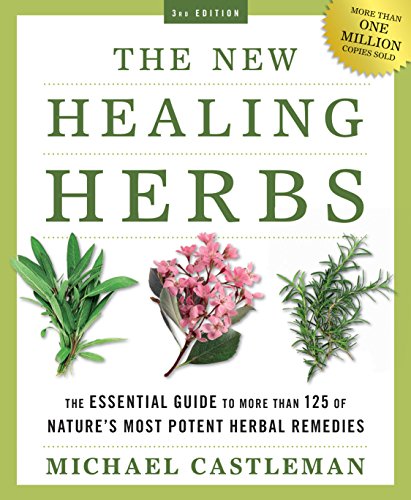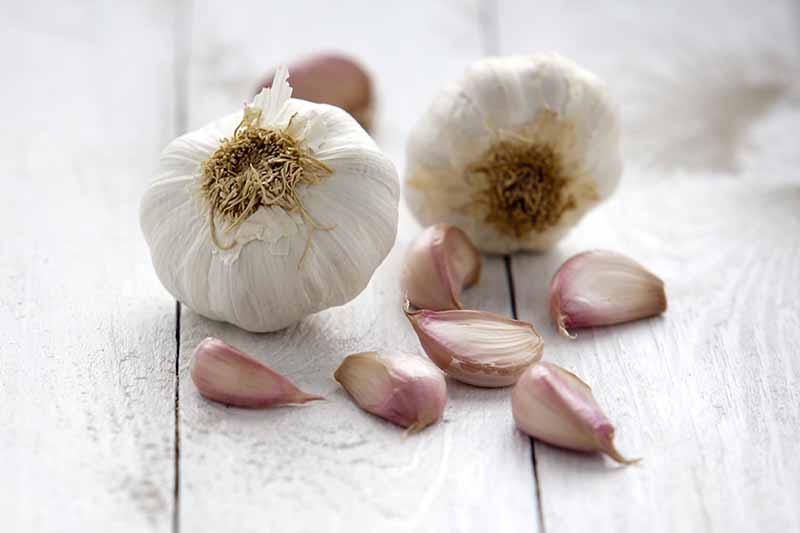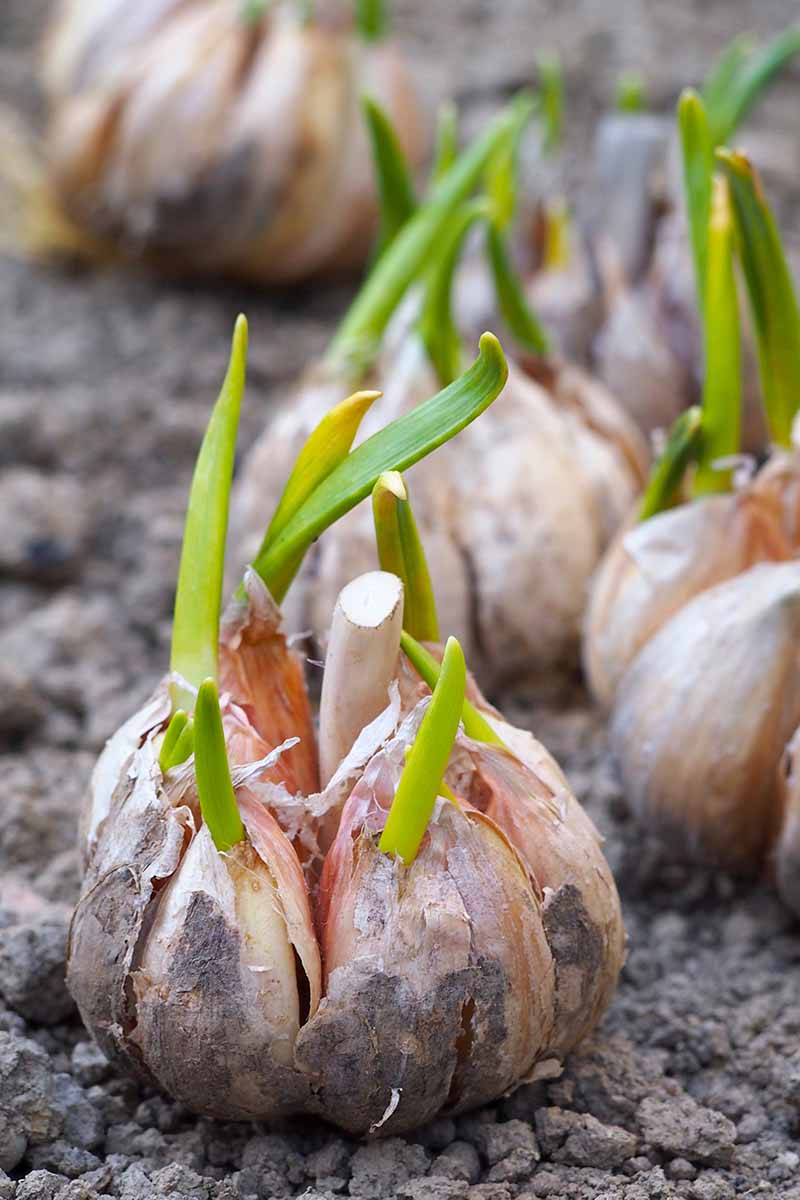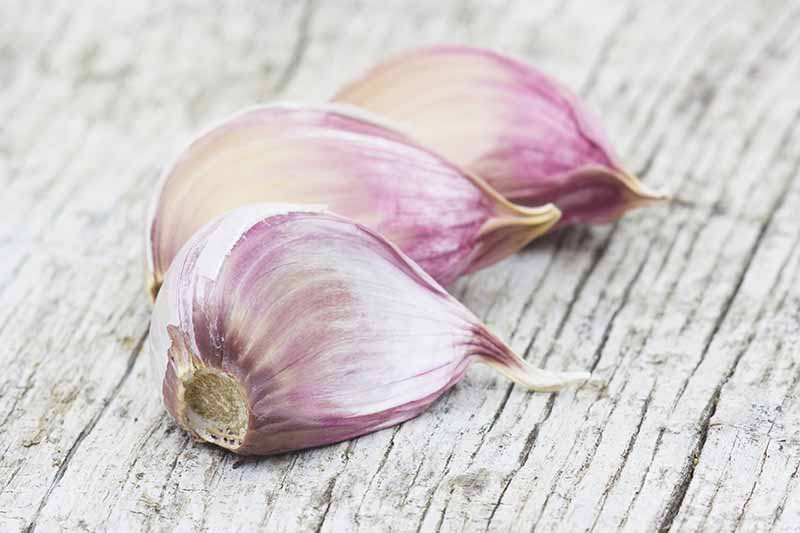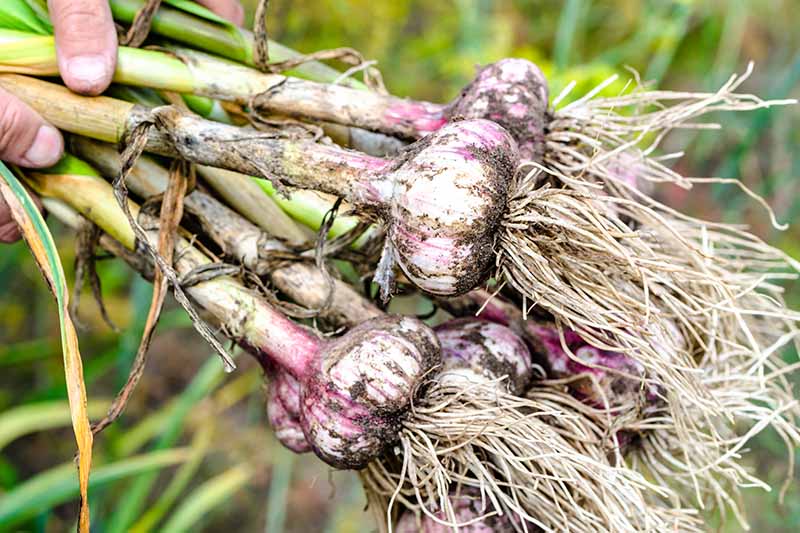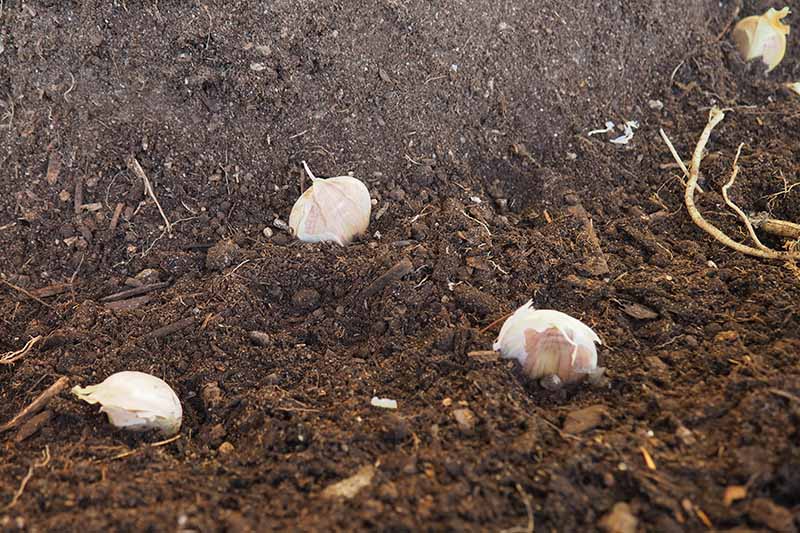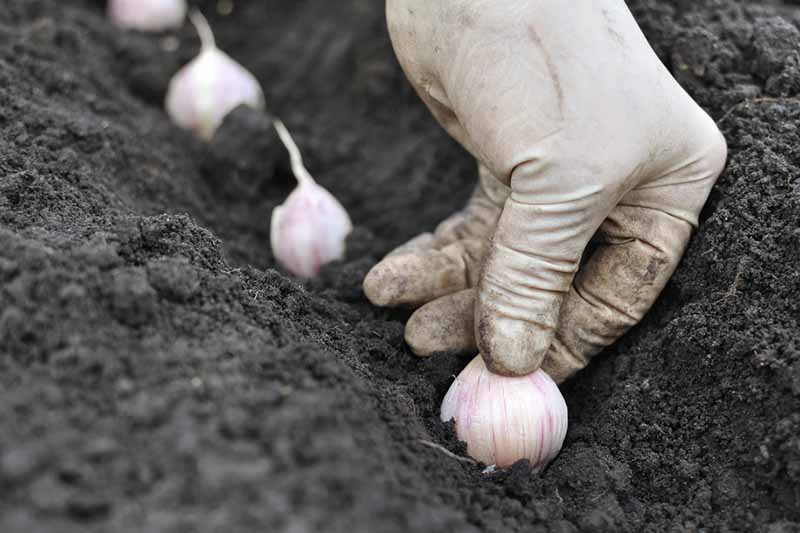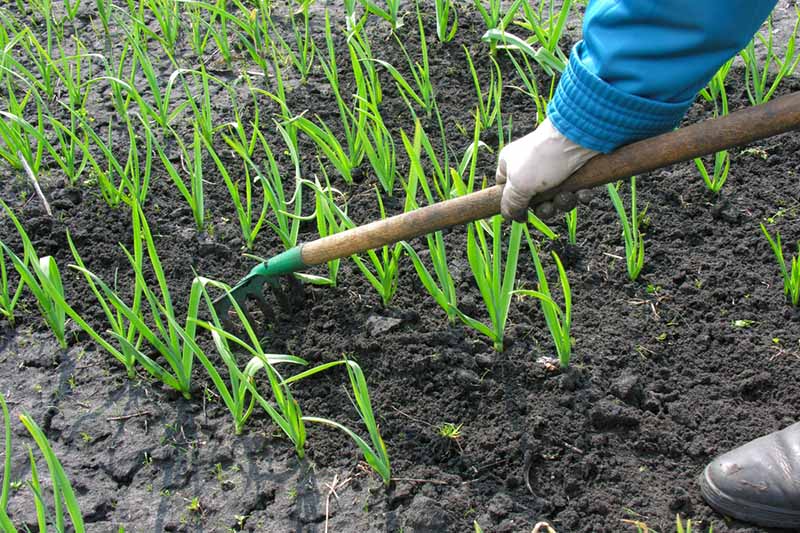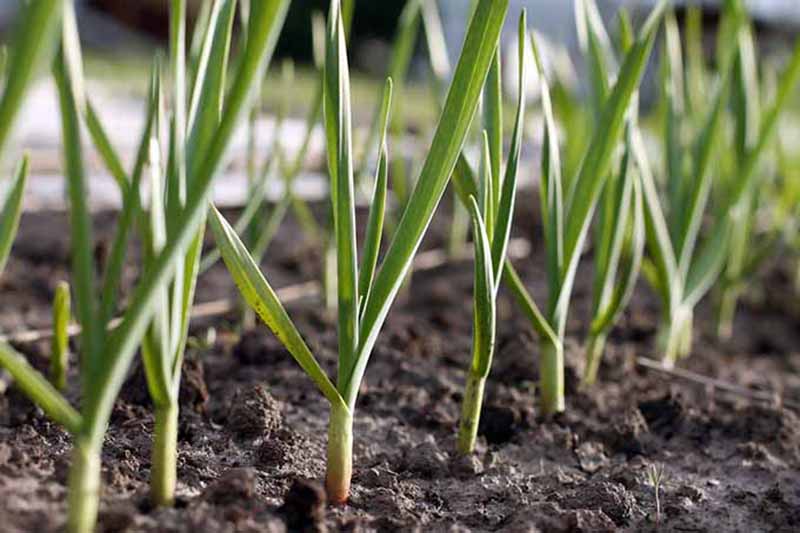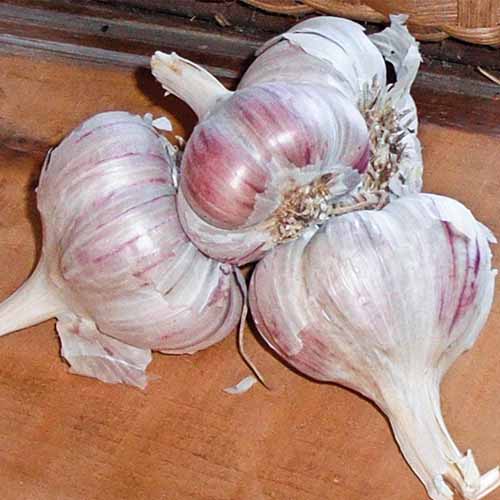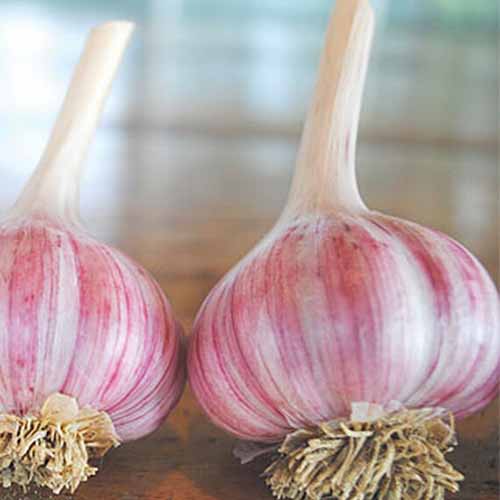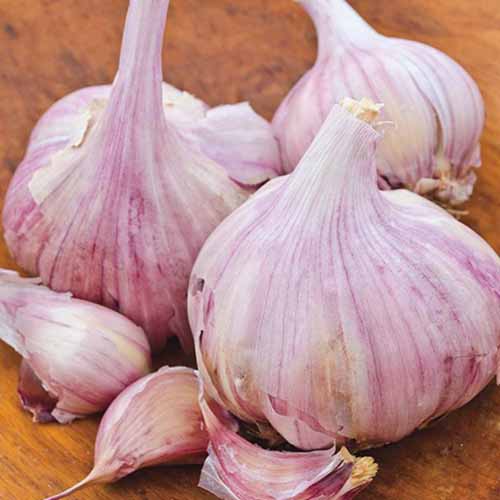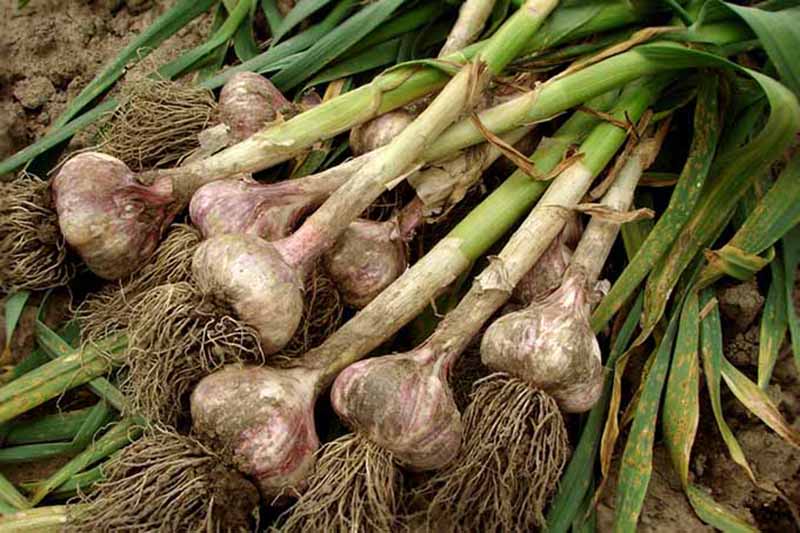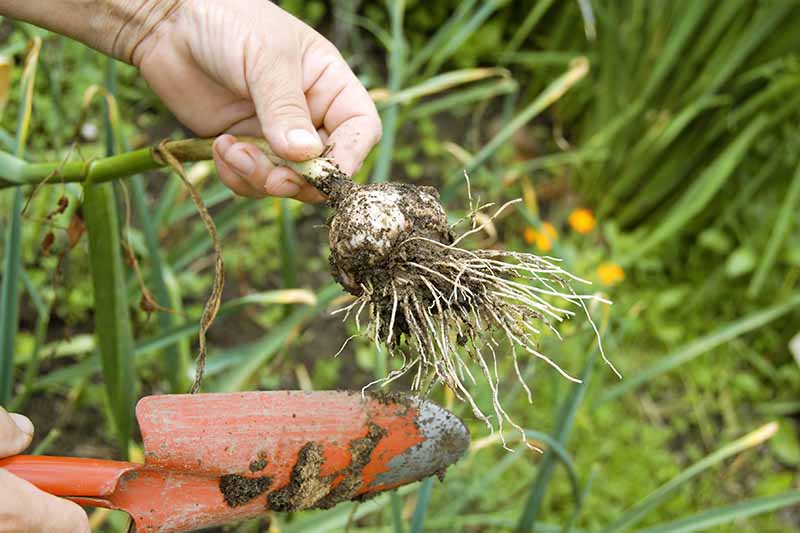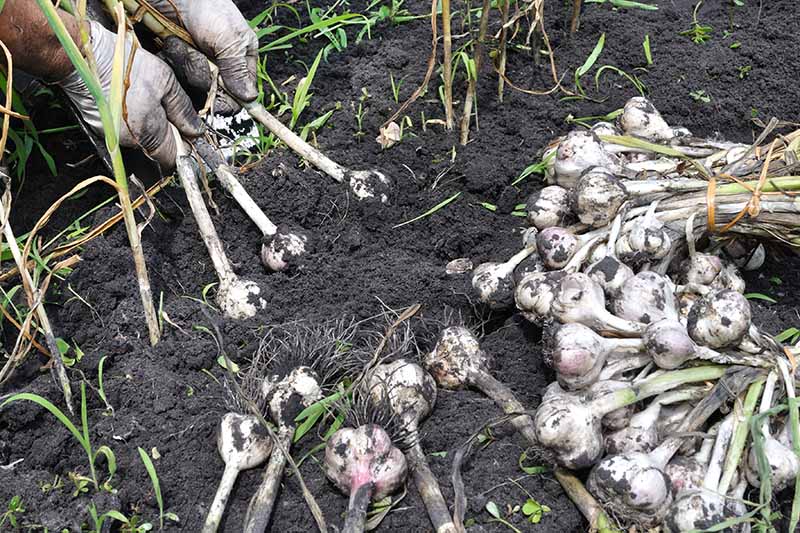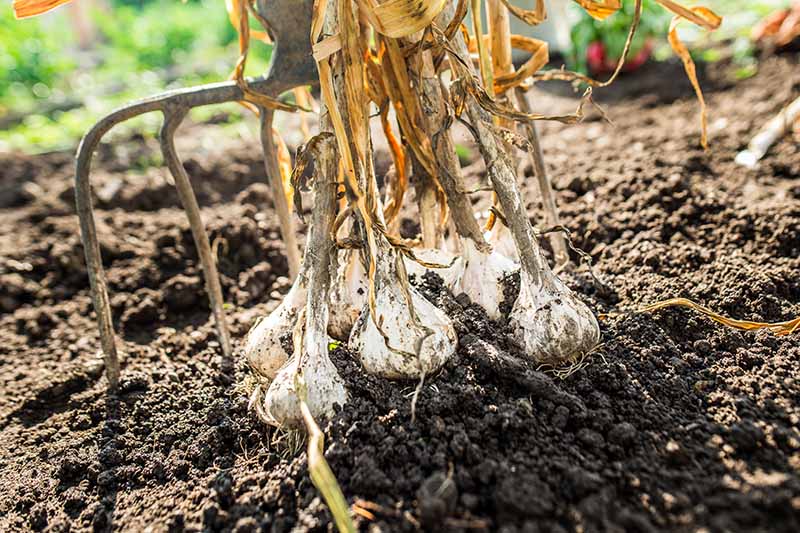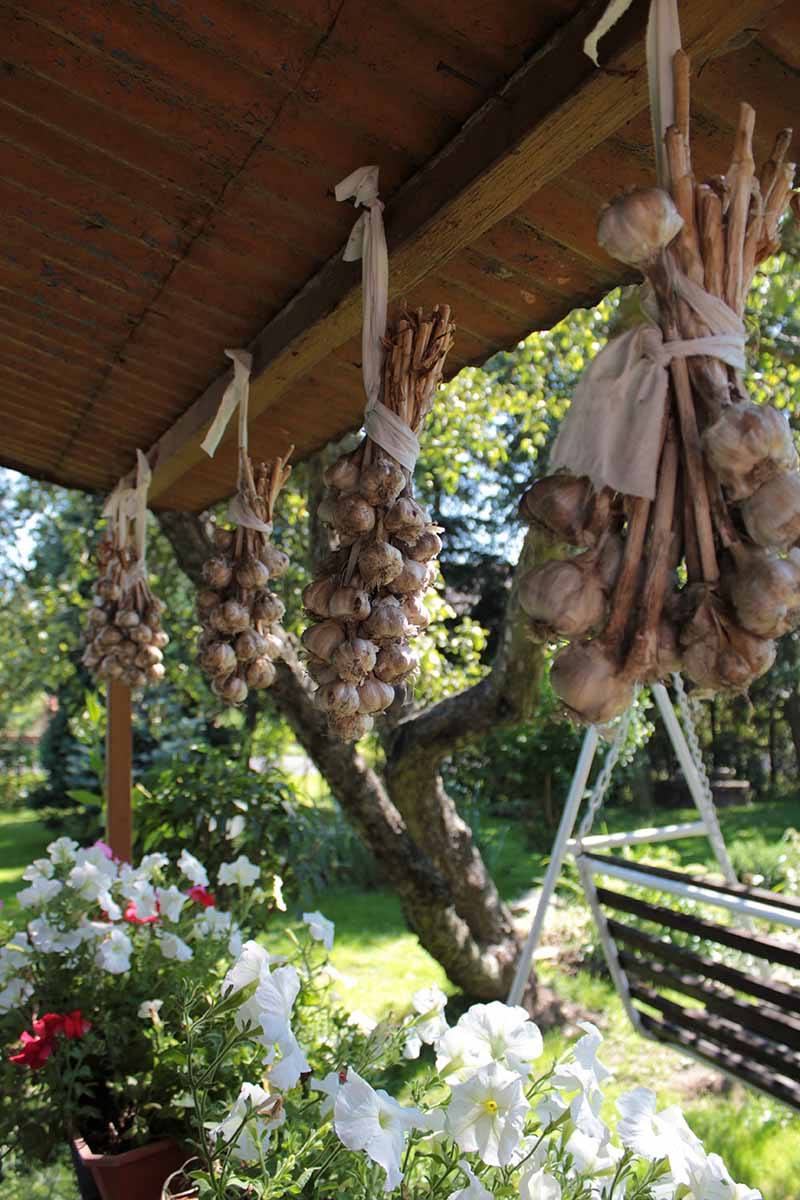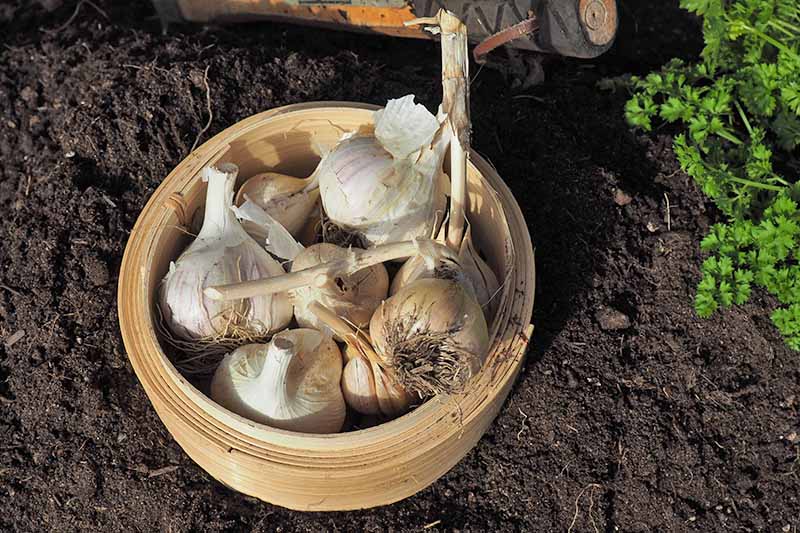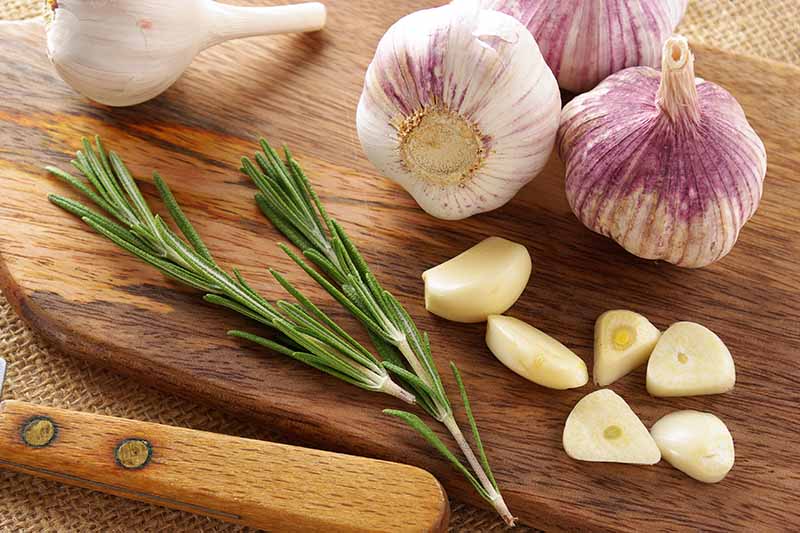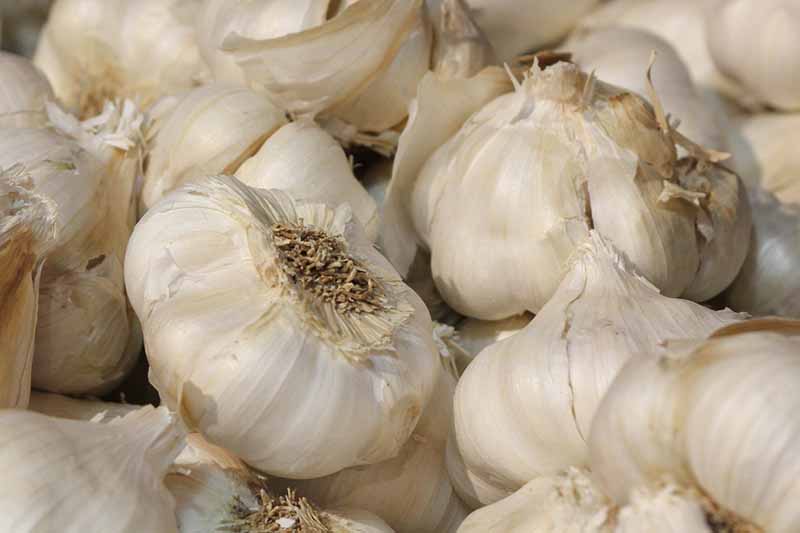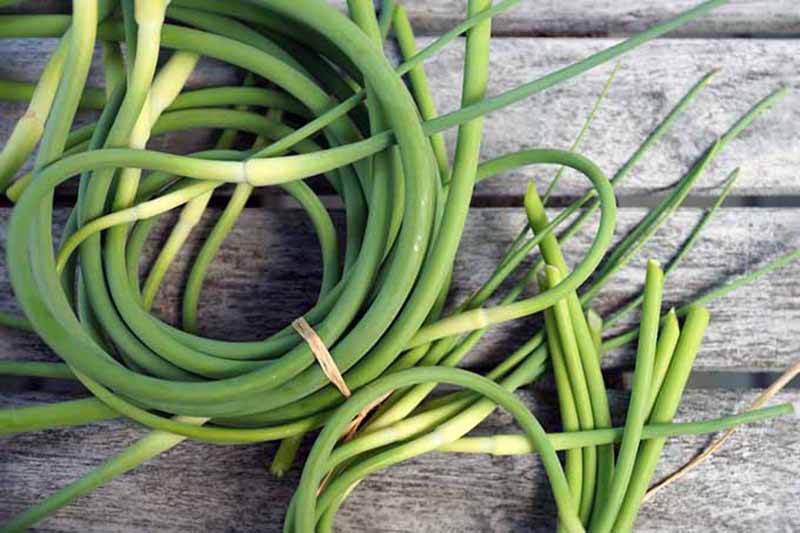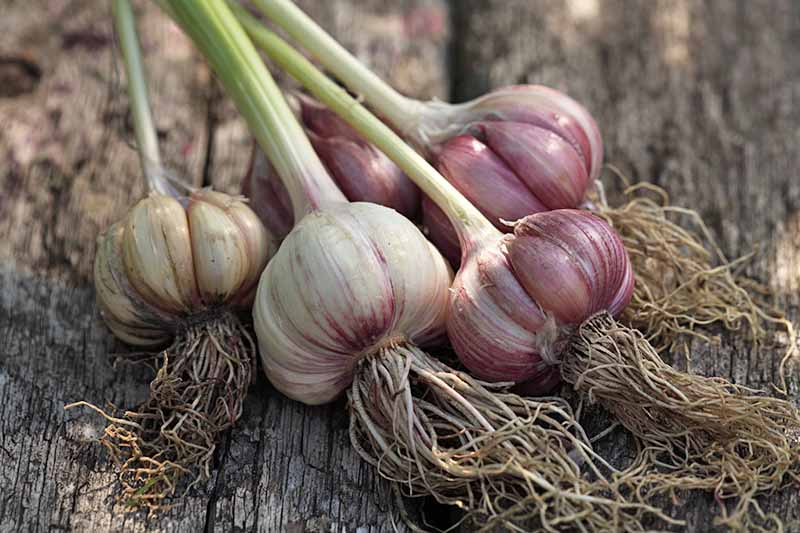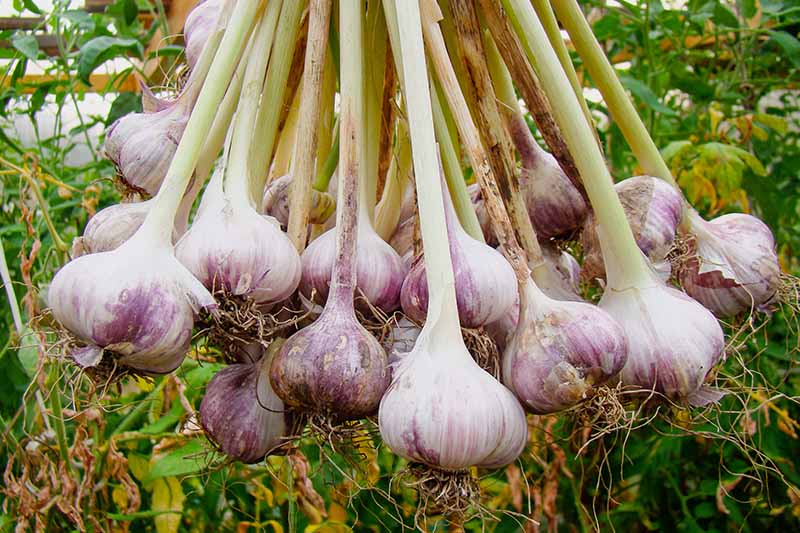This pungently potent vegetable is delightfully easy to grow. And as a natural pest and fungus deterrent, it makes a powerful companion to a variety of plants, from herbs and veggies to flowers and fruit trees. Revered throughout antiquity for its cultural significance and healing potential, entire books and festivals have been dedicated solely to growing this vegetable – and many more to eating it! We link to vendors to help you find relevant products. If you buy from one of our links, we may earn a commission. Let’s find out why this centerpiece of gastronomy is an absolute must-have in your garden. Not only is it incredibly easy to grow and a delight to devour, there could be some healthy, healing perks in it for you, too.
What Is Garlic?
Garlic is deemed a cultigen – the species we use in the kitchen is not known in the wild, but evolved over millennia of human cultivation. Its closest wild relatives are native to the Asian steppes, with cultivation beginning some 7,000 years ago.
A bulbous perennial, garlic is a species in the genus Allium, with close cousins including chives, leeks, onions, and shallots. It grows 18-24 inches tall, and the head, or bulb, is a storage organ used for fuel reserves to prepare for adverse and wintery conditions. Adaptable to many growing conditions, garlic is hardy in USDA Zones 4-9. The flat, grass-like leaves and segmented bulbs are highly aromatic, and typically grown as an annual in herb and vegetable gardens. After a few months, hardneck varieties form a flower stalk known as a scape, which is followed by large, umbel flowers. Softnecks occasionally form scapes as well.
If left to grow, the umbels – or flower heads – open to reveal showy, star shaped blooms in shades of pink and white. Blooming in late spring, they attract pollinators such as butterflies, bees, and ladybugs. The seeds form into small bulbils, which look like tiny garlic cloves on the end of the scape. Genetically, these are identical to the parent plant, and there will be no cross pollination between different varieties grown together. While you can grow from these seeds, propagation from mature cloves is the preferred method, having the best success rate and usually resulting in larger bulbs.
While growth is simple and straightforward, garlic’s signature taste is bold and complex – one of the reasons why it’s beloved in almost every global cuisine. Generally, there are two different varieties of garlic to consider. Either softneck varieties, A. sativum, or hardneck varieties, A. sativum var. ophioscorodon. Which is best for your garden? Let’s look at the differences.
Softnecks (A. sativum)
Often thought of as “true” garlic, softnecks account for most of what you’ll find at the supermarket. This is because they are more productive, easier to grow – especially in warm climates, and they store for longer.
They’re called softnecks because their above-ground stalks will flop over in the summer, a sign that they are ready to harvest. The fun perk of softnecks? You can braid them together for kitchen use and decoration, after the bulbs are pulled and cured! Within garlic’s sizable family tree, this category contains more groupings and cultivars. The kind you choose can impact certain traits – like color, bulb size, clove size, flavor profile, cold tolerance, and storage capacity.
Hardnecks (A. sativum var. ophioscorodon)
True to their name, hardnecks have stalks that will remain upright and rigid, even when they die back.
It’s harder to braid hardnecks, but you get a different bonus from this subspecies: the delicious scapes, or flower stems and buds, a culinary darling that we’ll get to later! The rewarding payoff is more variety and depth of flavor and color, as well as larger bulb sizes, so it could well be worth the extra effort of growing these if you live in an appropriate growing zone. While all types are reputed to have some powerful healing properties, there is a catch – you must consume it raw. This is because, when crushed, garlic produces a compound called allicin, which takes about ten minutes to develop.
Some studies, like this review from the Avicenna Journal of Phytomedicine published in 2014, show that allicin exhibits powerful antibiotic and antimicrobial effects, such as killing bacteria, viruses, and fungi. However, most of the allicin oxidizes quickly and antimicrobial properties dissipate – hence the need for quick consumption for maximum benefits. It also loses its effectiveness when heated above 140°F. This means you won’t find these fantastic antimicrobial properties in dried powder, or even in cooked cloves from your own garden. Nonetheless, something that’s so easy to grow, and with such amazing flavor, is truly worth your while!
Cultivation and History
Garlic has a long and storied history. An extensive, multicultural tale of epic proportions, in its wild form, it was first used as a food source by our foraging ancestors.
Domesticated and cultivated in the Middle East some 7,000 years ago, the ancient Greeks, Romans, Egyptians, Chinese, Indians, and numerous others embraced it as an irreplaceable condiment, food, and even medicine. The first recorded reference circa 1550 BC is found in the “Codex Ebers,” a medical text used by priests in ancient Egypt. Purportedly grown in the hanging gardens of Babylon, the locals referred to it as a “rank rose” – a similar term of endearment used today is that of the “stinking rose!” Here are some interesting historical tidbits: In India, it was an important and powerful Ayurvedic remedy – Ayurveda being a healing tradition that is still practiced today, utilizing both food and herbs as medicine.
Egyptians encouraged its cultivation in order to improve immunity, strength, and wellness among the less-nourished lower class. The ancient Greeks would give garlic to athletes to improve their strength and endurance. Roman healers used it for treating infections, wounds, and much more. Another surprising but wonderful thing? A lot of these uses are still valid today, supported by scientific research, and used by alternative practitioners and herbalists. New Healing Herbs
Propagation
Garlic can be grown from the seeds; however, this method is considered difficult and unreliable.
Annual growth from cloves, the individual bulb pieces, is the preferred propagation method of both commercial growers and the home gardener. From your our own harvested stock, use the largest bulbs for replanting and the smaller ones in the kitchen. Purchased bulbs should come from your local garden center or reputable online garden supply vendors – and not the grocery store.
The ones from supermarket can grow. But they’re often sprayed with chemicals to prevent them from sprouting on store shelves. And they haven’t been hand-selected for disease resistance, size, and other characteristics that gardeners and farmers want for growing purposes. Check out our cultivars section below for suggestions. Choose large, firm bulbs free from brown patches, soft spots, or shriveling, and with the exterior paper tunic still intact. Read more about propagating garlic here.
How to Grow
One of the first crops to emerge in spring, garlic thrives in well-draining, fertile soil with a loamy texture, and requires full sun to produce the biggest bulbs.
Vernalization
Hardneck varieties require a period of vernalization (winter cold exposure) before or after sowing. The ideal conditions to stimulate bulb formation require exposure to 40-50°F temperatures for a period of 6-12 weeks over the winter months.
Vernalization occurs naturally in regions with cold winters, but in milder areas, several weeks of storage in the produce drawer of your refrigerator will provide the required temperatures and humidity levels. Softneck varieties are better suited for growing in warm climates, but they also perform better with a period of vernalization. Refrigerator storage for 8-12 weeks before sowing produces the largest bulbs. Look for bulbs that have been pre-chilled at the nursery to save time. These will be ready to plant. Cloves can be planted in spring or fall, but bulbs from fall sown garlic tend to be larger with deeper, more complex flavors than those sown in spring. Fall sowing is optimal in September and October in most regions, with the end of November being a typical cut-off date for planting.
Spring sowing is not recommended because bulb formation halts in hot temperatures, and garlic requires a long growth period. However, if you must sow in spring, March provides a small window of opportunity if your local conditions permit sowing at that time.
Planting
When sown in fall, plants lay down roots until the ground freezes. This late growing period gives them a nice head start, with explosive growth triggered by warm spring temperatures. Till the soil deeply, and amend with plenty of compost or well-rotted manure. Garlic must be grown in well-draining soil, and excessive moisture is the leading cause of disease. A raised bed improves drainage and can be beneficial in areas with high rainfall levels or heavy soil.
A pH of 6.0 to 7.5 is preferred, and lime should be added several weeks before planting if the pH is lower than 6.0. Separate the bulbs carefully into individual cloves with the skins still intact. Set each one approximately 2 inches deep in the soil, with the flat end down and the pointed tip placed about 1-2 inches deep. Space 4-6 inches apart in rows, or grouped in pockets.
Plant a little deeper if heavy rains or heaving frosts might expose the cloves, and a bit shallower in heavy soils or when using a thick mulch after planting. Once all the cloves are in place, fill in the rows or planting holes with loose soil and firm lightly. Avoid compacting the soil. Fertilize only after growth starts in spring, then every 30 days until the end of May. Use an all-purpose fertilizer with an NPK ratio of 5-5-5 or 10-10-10. This is the ratio of nitrogen to phosphorus to potassium, the main macronutrients required for plants to grow.
Broadcast granular fertilizer over the bed, or work it in as a side dressing. Don’t over fertilize, as this can result in too much top growth with under-developed bulbs. Bulbs require only moderate to average water levels, and benefit from a thick, 6-inch layer of dry mulch such as clean straw, evergreen boughs, or fern fronds added when you plant them. In winter, mulch provides protection against cold temperatures and drying winds. In summer, adding a layer of mulch helps to retain moisture, maintains cool soil temperatures, and keeps weeds down. Garlic tends to struggle in tropical and sub-tropical growing zones, due to excessive humidity, moisture, and rainfall. In Zone 8 and higher, garlic can be grown year-round – conditions here are ideal for softneck varieties that require little or no winter covering. In Zone 7 and lower, hardnecks are a better option, thanks to their cold hardiness. These varieties do require a winter mulch, to develop the healthiest plants.
Growing Tips
The following tips will help you to enjoy the best harvest possible:
Remove scapes before flowering to concentrate energy in the bulb. But don’t discard them – they’re delicious sauteed or stir-fried! Prevent premature sprouting in warm spells with a thick mulch to keep bulbs cool. Use mulch to keep weeds down, and hand weed between plants to avoid disturbing bulbs. When a bit more than half of the lower leaves have yellowed, withered, and died, bulbs are ready for harvest.
Companion Planting
One of the most effective companion crops for the garden, garlic’s high sulfur signature is a natural pest and fungus repellent. And because it’s compatible with most plants, it makes an excellent crop to scatter throughout the garden.
It’s known to deter a variety of pests, including:
Ants Aphids Cabbage loopers Codling moths Deer Fungus gnats Japanese beetles Onion flies Rabbits
The list of plants known to benefit from garlic’s pest deterrent properties is long, and includes the following:
Beets Berry canes Cruciferous veggies Carrots Dill Eggplant Fruit trees Garden geraniums Kale Kitchen herbs like basil, marjoram, oregano, rosemary, savory, and thyme Peppers Roses Spinach Tomatoes
And there are only a few plants that don’t like to be near this pungent allium. In the garden (but not the kitchen!), keep it away from asparagus, beans, and peas – it can stunt their growth. A soil borne fungus, avoid planting wounded or damaged cloves, and rotate allium crops annually to reduce the chance of infection. Read more about companion planting with garlic here.
Cultivars to Select
What’ll it be, hardneck or softneck?
Softnecks
Here are a few of the main softneck subspecies to consider:
Silverskins
These silvery-white, thin-skinned softnecks are very easy to grow, with the best storage capacity of all types. This kind produces tons of cloves with that trademark pungent flavor. They’re best for growing in warmer climates. And some varieties have a blush-red, rosy tint. Recommended cultivars include ‘Creole Red,’ ‘Silverwhite,’ and ‘Nootka Rose.’
‘Nootka Rose’ ‘Nootka Rose’ has a strong flavor and is exceptionally productive. Bulbs are available from Burpee.
Artichokes
These have thicker skins and many complex layers of cloves like an artichoke, from whence they got their name. They’re the kind you’re the most likely to stumble upon at the grocery store. Milder in flavor than other types, it’s not uncommon for cultivars of this variety to have a purple or red hue. As the hardiest softneck variety, this is a good option for growing in colder regions. Popular varieties include ‘California Early,’ ‘California Late,’ and ‘Inchelium Red.’
‘Inchelium Red’ Pick up the pleasing flavor and medium pungency of ‘Inchelium Red’ from Gurney’s Edible Garden, available from Home Depot.
Hardnecks
Here are a few of the main hardneck types to consider for your garden: Elephant garlic, the popular enormous roasting variety, is not actually a true garlic at all – it is in fact a subspecies of leek. However, these are planted and grown the exact same way as your typical garlic. Big in size but with a mild, nutty flavor, elephant bulbs are available from Burpee.
Purple Stripes
The oldest hardneck variety, these are showy with beautiful purple stripes and delicate, papery skins. Very cold tolerant, but this cultivar is also better for warm climates than most other hardnecks. Size and flavor at maturity can vary, though these tend to be average or small, with a moderate to warm flavor. Recommended strains include ‘Purple Glazer,’ ‘Chesnok Red,’ and ‘Bogatyr’ (that last one is very hot and pungent!).
‘Chesnok Red’ For a bulb with medium flavor and mild scapes, try ‘Chesnok Red,’ available from Burpee. Probably the most widely grown of hardnecks, these have less thick, more parchment-like skins, making them better suited to cooking. Thinner skins mean easier peeling – with cloves that fall right off the bulb and skins that come away with little to no effort. The potential drawback here is that these less-protected cloves can be more vulnerable to bruising and damage during harvest. They need to be handled quite carefully. Bulbs that crumble or fall apart easily have shorter shelf lives than those with intact cloves that remain attached to their original bulbs. ‘Rocambole’ is a variety you will probably want to eat up quickly after you pick it! Some cloves have purple or red stripes or blotches of color, and this variety does best in cold climates. Popular cultivars include ‘German Red,’ ‘Deerfield Purple’ (aka ‘Vietnamese’), and ‘Ukrainian Red.’
‘Deerfield Purple’ With a warm, rich flavor and moderate heat, ‘Deerfield Purple’ is popular for growing in cooler gardens. Pick up bulbs from Gurney’s Edible Garden at Home Depot.
Porcelain
This type is known for producing larger cloves with smooth, thick, and papery-white skins. With a bold but moderate flavor compared to other types, these are known for their amazing longevity in storage. Porcelain varieties may have the best cold tolerance of all, and they are ideal for growing in cold climates, but more difficult to grow in warmer locales. Though rare, cultivars of this type sometimes exhibit blushes of purple and rose. Recommended varieties include ‘Music,’ ‘Georgian Fire,’ and ‘German White.’
‘Music’ Fully flavored and among the hardiest, ‘Music’ is a highly sought after by home gardeners. Pick up bulbs from Burpee.
Managing Pests and Disease
Though trouble from pests is uncommon, garlic can suffer from various diseases. Look for resistant varieties when you do your shopping, and plant the appropriate type of garlic for your growing zone for the best results. According to Michelle M. Moyer at The Plant Disease Diagnostic Clinic at Cornell University, the following are the most common diseases to watch out for when growing garlic:
Basal Rot (Fusarium culmorum)
Basal rot often shows as yellowing, followed by dieback of the leaves and/or a white growth around the bulb base.
Downy Mildew (Peronospora destructor)
White spots and fuzz form on plants, hampering growth potential. Downy mildew is usually the result of overly damp environments, or plants spaced too closely together. Provide excellent drainage, proper spacing, and adequate air circulation to avoid welcoming conditions.
Penicillium Decay (Penicillium hirsutum)
This fungal infection is the result of poor storage of seed stock, and planting wounded or bruised cloves. To prevent an infection, dry your seed cloves thoroughly, using the methods that we’ll get to later in this article.
White Rot (Sclerotium cepivorum)
This disease is exhibited by fluffy, fuzzy fungal growth on the stem and bulb of plants that quickly causes them to rot and die. Avoid re-sowing in plots with the disease if you notice an infection – white rot can last in the soil for two decades – and remove infected plants quickly. Heat treating seed cloves in hot water – “hot” meaning 100-115°F, but NOT over 120°F – can prevent pathogen spread.
Harvesting
The garlic harvest typically starts a few weeks after summer begins, if you have planted in the fall. Hot summer weather triggers bulb maturation, shutting down foliage growth in preparation for dormancy.
A couple of indicators will let you know when your bulbs are ready for harvest: One is when a bit more than half of the lower leaves turn yellow and dry out. Hardneck varieties will have leaves that brown and dry, but retain an upright flower stem. With softnecks, all of the leaves will flop over as bulbs mature. Or, you can dig up a couple of bulbs around mid-July and check their size. If they’re as big as you hoped, it’s time to pull them out!
After late July, there is very little chance they’ll continue to grow. You can wait until August or even September to see if they’ll get a little bigger, but it won’t be much. By September at the latest, it’s time to pull your bulbs no matter what. To harvest, loosen the soil around and under the roots with a garden fork or hand trowel. Provide up to 12 inches of ease out from the plant stem to avoid damaging bulbs.
Gently grasp the neck of each plant close to the bulb and work it out of the soil. Avoid pulling hard on the leaves if the bulbs are resistant. Instead, work your fingers under the base of the bulb and gently lift to release from the soil. Brush off any excess soil and clip roots close to the bulb to prepare for curing and storage. Read more about harvesting garlic here.
Curing and Storing
Curing is the term for the thorough drying required for flavors to develop fully, and it helps to ensure a long storage life, free from discoloration and rot.
However, you can eat garlic as soon as it’s pulled. Just clean, peel, and enjoy – no need to wait to complete the curing process! Freshly harvested garlic typically has a milder flavor than cured bulbs. You can even pull up whole plants in spring, preparing and eating the undeveloped bulbs like leeks. This is called “green garlic,” something you might see at restaurants or farmers markets, and it makes a delicious alternative to the bulb type. Both leaves and immature bulbs are edible.
For long-term storage, try the following: Bulbs can be dried whole with the scapes still attached and braided into attractive bunches. Or, you can clip them off after harvest – just make sure you leave 7 or more inches of stalk attached to the bulb, which will help it to cure by drawing moisture away from the cloves. If the stalk still feels moist and pliant, allow bulbs to cure for another week or two before storing. Hang tied bunches in a dark, dry area with good air circulation. If you clipped your garlic instead, store it in loose piles in containers that permit airflow – preferably in breathable crates, boxes, or shelves. Bamboo steamers make handy storage containers for bulbs. Curing can take anywhere from 4 to 6 weeks. Check the progress daily – once the paper-like skin starts to peel away but the cloves still feel firm, you’ll know they’re ready. You can then cut off any leftover plant material and store as you like – in a dry basket in a cool, dark cupboard, or in a paper bag in the fridge. And to make your harvest really last, do one last important step – sort your garlic! Being careful to keep them intact and without breaking them up into cloves, set aside the largest heads in a dark and dry place for use as seed next year. Use the smaller ones in your cooking. Read more about curing and storing garlic here.
Recipes and Cooking Ideas
One of the best and most obvious reasons to grow it in your own backyard is for culinary purposes!
Here are a few cooking ideas to feature your homegrown garlic: Crush, slice, mince, chop, or throw whole cloves into your desired dish for a punch of added flavor. Garlic makes a pivotal contribution to the flavor of soups, stews, and broths.
You can also roast whole heads, making them into a delicious spread for bread, or a garnish for protein dishes, roasted vegetables, or homemade pizza. Garlic is a staple ingredient in pesto, along with basil, pine nuts, olive oil, and cheese. The flavorful scapes make an excellent addition, too.
You’ll love the rich, savory flavor of grilled vegetables with balsamic vinegar and garlic. Get the recipe on our sister site, Foodal. For a flavorful side dish, these parsley mashed potatoes are the smoothest and the creamiest. Get the recipe now on Foodal. For the ultimate French fry or veggie dip, try Foodal’s homemade garlic aioli – it’s full of delicious flavor. When it’s game day, be sure to try these Italian-style wings with basil and Parmesan cheese. But make lots, they’re always a hit! You can find the recipe on Foodal.
Health and Healing
For the very best health benefits, enjoy the cloves raw as often as you can – it can be a challenge, though! Raw cloves can have an overwhelming flavor and heat, and consuming them might cause indigestion or stomach cramps in some individuals, so be cautious.
Some studies (like this one) have found, however, that a cold-water press of the cloves, such as in a warm or cold tea, can retain some allicin, and may work as a mild antimicrobial tisane. It would be nowhere near as powerful as the fresh stuff, though! According to this study, consuming garlic regularly as a culinary herb provides allicin and other beneficial phytonutrients that may boost health and immunity. The bulbs also contain another potent compound called ajoene, with some studies pointing to its anti-tumor and diabetes management possibilities. Among herbalists and alternative medicine practitioners, there is a lengthy tradition behind garlic’s use as a topical antiseptic, cold and flu fighter, digestive healer, and tonic – and it’s still employed by some naturopaths for combating various ailments, even stomach ulcers and parasites.
Quick Reference Growing Guide
But it’s much more rewarding to grow it yourself, as many gardeners, farmers, and culinary enthusiasts have known for thousands of years.
With your own bulbs to enjoy straight from your yard, you can feel the amazing benefits, satisfaction, and ownership of having nurtured your very own plants – and oftentimes, growing your own makes for even tastier and healthier food! What gardening, culinary, and healing experiences have YOU had with garlic? Let us know in the comments below. Next up, here are a couple of related growing guides to dig into:
Tips for Growing Garlic in Containers How to Plant and Grow Persian Star Garlic The 19 Best Cool Weather Crops for a Productive Fall Garden
Photos by Lorna Kring © Ask the Experts, LLC. ALL RIGHTS RESERVED. See our TOS for more details. Product photos via Burpee and Gurney’s Edible Garden. Uncredited photos: Shutterstock. Originally published on May 5, 2016. Last updated on December 5, 2019. With additional writing and editing by Lorna Kring, Clare Groom, and Allison Sidhu.
